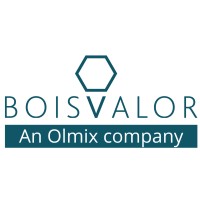The Society for Mycotoxin Research recently held its annual Mycotoxin Workshop in Celle, Germany.
On 5-7 June 2023, mycotoxin scientists from renowned institutions presented their latest work on different topics, as varied as occurrence, food safety, toxicology, fungi, and analysis. Olmix participated in this insightful event and selected three communications to be shared in this Myco’News.

Food Safety session: Mycotoxins in insects for food and feed, by Ronald Maul
With the increasing use of insects as feed and food ingredients, the impact of mycotoxins in insects is being explored. After showing that the uptake and metabolization varies among mycotoxins and insect species, Maul focused on the impact of aflatoxin B1 (AFB1) on mealworm (Tenebrio molitor) larvae. Main findings reveal that the larvae tolerate very high levels of aflatoxins, and poorly accumulate it.
Additionally, mealworm larvae metabolize AFB1 in several phase I metabolites, including novel derivates such as monohydroxylated AFB1. Meanwhile, uncertainties remain in regard to the fate of AFB1 in mealworm, since 87% of the ingested toxin remained undetected in the larval body and residue.
Reference: Maul et al., 2022. 44th Mycotoxin Workshop. Lecture 12, page 38.
Health / Exposure session: Short-time exposure to the Fusarium mycotoxins deoxynivalenol and zearalenone in cows fed a diet inducing rumen acidosis, by Regiane R Santos
The rumen microflora has a certain capacity to deactivate some mycotoxins. However, this ability is compromised when the microbial population is affected, e.g. in case of subacute rumen acidosis. The study presented by Santos explored the effects on dairy cows of a natural contamination in deoxynivalenol (DON) and zearalenone (ZEA) in combination with a diet inducing rumen acidification.
Results show that the mycotoxin contamination impaired cows’ feed efficiency and decreased milk production (yield and composition). Moreover, when the rumen was acidified, ZEA absorption was not impacted, but the exposure of dairy cows to DON and its metabolites increased.
Reference: Kroon et al., 2022. 44th Mycotoxin Workshop. Lecture 17, page 44.
Analysis session: IR spectroscopy combined with LC-MS/MS analysis for rapid mycotoxin screening, by Stephan Freitag
Infrared (IR) spectroscopy is being explored for rapid detection of mycotoxins, as an attractive alternative to ELISA which can suffer cross-reactivities and requires a lot of consumables. In their work, Freitag and his team assessed that near infrared spectroscopy (NIRS) is more relevant than mid-infrared spectroscopy (MIRS) when it comes to mycotoxin screening. The method is based on chemometrics approach, tracking fungal-induced changes in the samples, and correlated with LC-MS/MS mycotoxin detection. A model was set up for zearalenone analysis on European corn and now needs to be validated. DON prediction in wheat is also being explored.
Reference: Krska et al., 2022. 44th Mycotoxin Workshop. Lecture 30, page 57.
More information about the Mycotoxin Workshop, including the abstracts, is available here: https://www.mycotoxin.de/mycotoxin-workshops.




